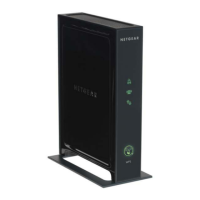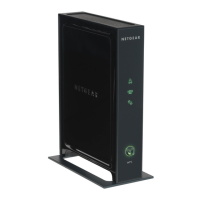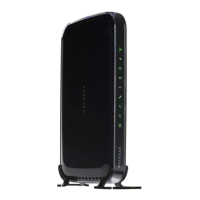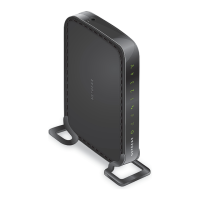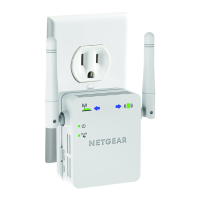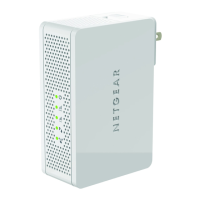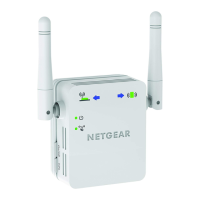Do you have a question about the NETGEAR WN2000RPTv2 and is the answer not in the manual?
| WiFi Technology | 802.11n |
|---|---|
| Frequency Band | 2.4GHz |
| Ethernet Ports | 1 x 10/100 Mbps |
| Antenna | Internal |
| Wireless Speed | 300 Mbps |
| Security | WEP, WPA, WPA2 |
| Operating Humidity | 10% to 90% non-condensing |
| Storage Humidity | 5% to 95% non-condensing |
| LED Indicators | Ethernet |
| Operating Temperature | 0°C to 40°C (32°F to 104°F) |
| Storage Temperature | -20°C to 70°C (-4°F to 158°F) |
Details the LEDs and buttons on the front of the extender for status indication.
Describes the ports and buttons located on the rear of the extender.
Explains the extender's function as a bridge between networks.
Guidance on optimal scenarios for using the extender to improve network coverage.
Recommendations for placing the extender for best wireless signal and performance.
Step-by-step instructions for establishing a wired connection to the extender.
How to access the extender's web-based management interface.
A guided process to configure the extender for network connection.
Steps to wirelessly link the extender to your home wireless network.
Instructions for connecting devices using Wi-Fi Protected Setup (WPS).
Customize the extender's network name (SSID) and security options.
Configuration options for robust wireless security protocols.
Details on setting up the older WEP security protocol and its limitations.
Configure how the extender obtains its IP address from the network.
View the current operational status and configuration of the extender.
Access detailed information on network traffic and port utilization.
Lists all devices currently connected to the extender.
Save and restore extender configuration for easy management.
Instructions to change the default administrator password for security.
Guide to updating the extender's firmware for new features and fixes.
Configure extended wireless features like SSID broadcast and access lists.
Answers to common questions encountered during the setup wizard process.
Troubleshooting steps for accessing the extender's management portal.
Guidance and troubleshooting for connecting the extender to wireless networks.
How to reset the extender to its original factory default configuration.
Detailed hardware and software specifications of the extender.
General information regarding legal and operational compliance requirements.
Specific FCC rules and user information for US operations.
Official statement declaring the product's compliance with FCC regulations.
Guidance on potential radio interference and mitigation.
Recommended distances from household appliances to minimize interference.

